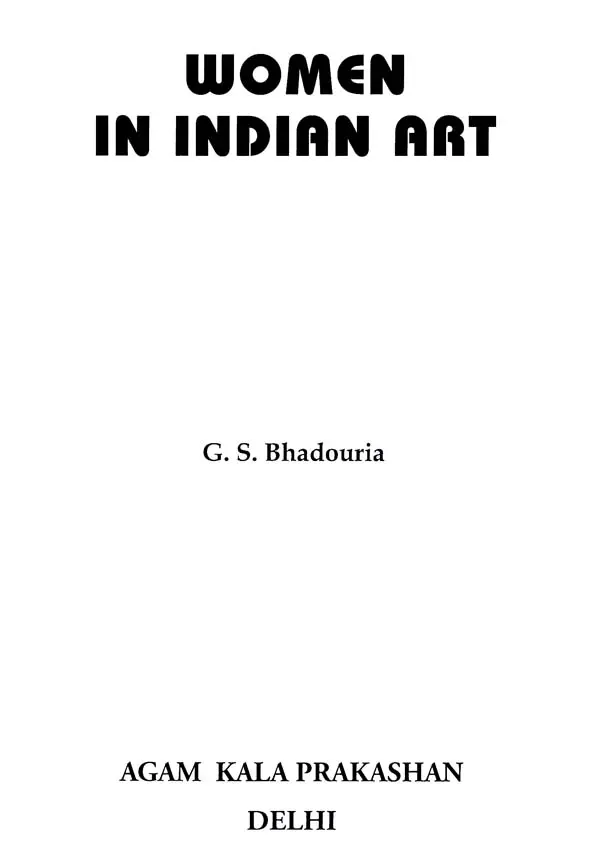
Women in Indian Art
Book Specification
| Item Code: | UAM234 |
| Author: | G.S. Bhadouria |
| Publisher: | Agam Kala Prakashan, Delhi |
| Language: | English |
| Edition: | 2019 |
| ISBN: | 9788173200246 |
| Pages: | 229 |
| Cover: | HARDCOVER |
| Other Details | 0.00 X 7.50 inch |
| Weight | 610 gm |
Book Description
The main attraction of the ancient Indian art is the celestial females of eternal beauty. These damsels are known by various names such as shalbhanjika (a woman bending or breaking the twig of a shal tree), yakshi (a folk deity whose male form is yaksha), sura-sundari (a divine beauty). etc.
The Dancing Girl, now 4" high, made in bronze, found from HR area in Mohenjodaro, is very remarkable. Her right hand rests on the hip, her left arm, covered entirely with bangles, hangs loosely and the posture of the legs is easy. She has large eyes, flat nose and bunched curly hair and gives the look of an aboriginal tribal lady. Her head is tilted and feet below her ankles are missing. This dancing girl is the first portrayal of feminine charm in Indian art.
The chauri-bearer or the yakshi from Didarganj (Bihar) is a splendid monolith representing the third century B.C. Mauryan feminine grace most eloquently. She stoops slightly owing to the fullness of the breasts and attenuated waist on broad hips. Appropriately, in Sanskrit literature the beautiful women is frequently said to bend from the weight of her large breasts just as the branch of a tree is overweighed by its ripe fruit.
The life-size carvings of yaksha, yakshis, devatas and other figures of the Shunga period show the sculptor's zeal for representing minute details, such as marks painted on the body or decorative patterns on turbans or cloth, though a knowledge of correct human anatomy is absent, yet, the art as a whole has a decorative charm of its own specially in such lovely figures as those of Sirima Devata and Chulakoka.
The rationale of thought and the sensuousness of feeling in man towards the other sex the world over and the known history of humanity have inspired him to portray her in various forms and moods, poses and postures. The media may be stone, metal, terracotta or any other form fit for human expression. The given history of mankind is replete with man's creation of his own mother, beloved, sister, daughter and others. Even in the early stages of his progress towards the path of culture and civilization, primitive man portrayed his counterpart in the form of a woman, with a sense of social 'relativism'; in drawing inspiration from his socio-religious surroundings and in the development of the norms and concepts of beauty and its appreciation. This idea is universally applicable to all the races and cultures of the world and the Indian subcontinent is no exception. More than the present milieu of the modern society of cosmopolitan nature where ancient values are rapidly being changed or replaced with the new ones, this has had better application to ancient Indian culture, civilization and art. It is here that the woman, right after her appearance in public, assumes the role of a mother-goddess. Apart from that, she does appear in many other forms, full of ever-charming beauty, sensuous and physical charm and attraction of varying degrees.
**Contents and Sample Pages**
















